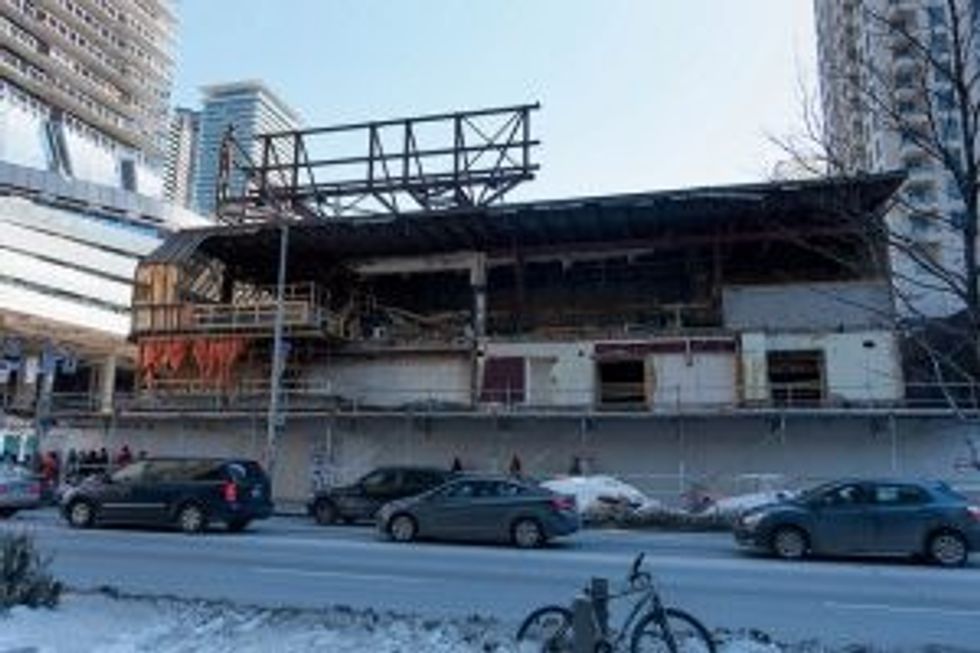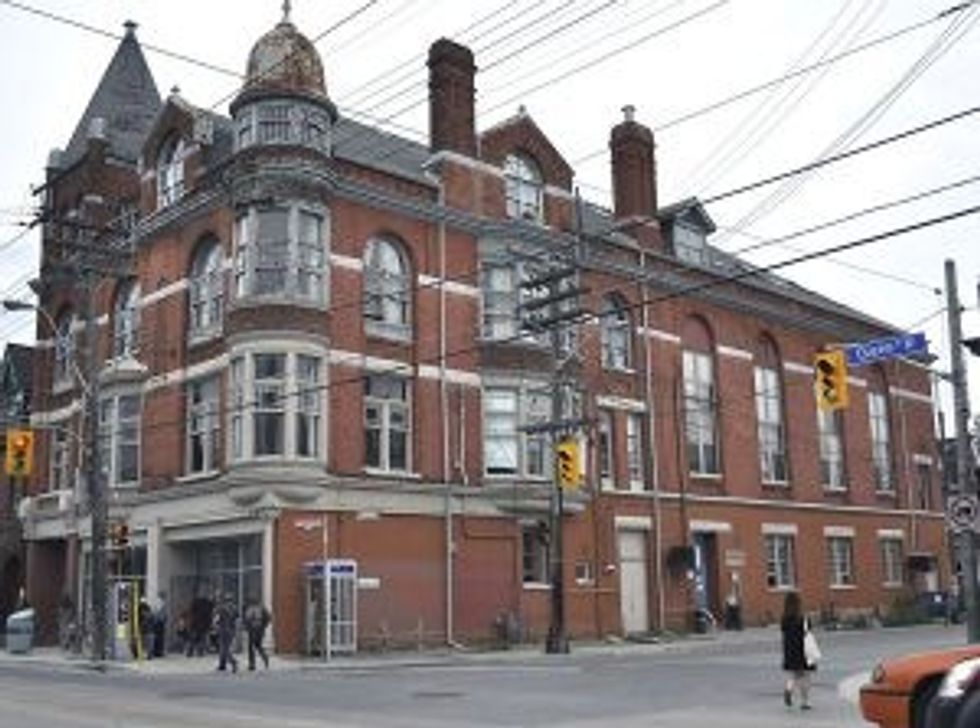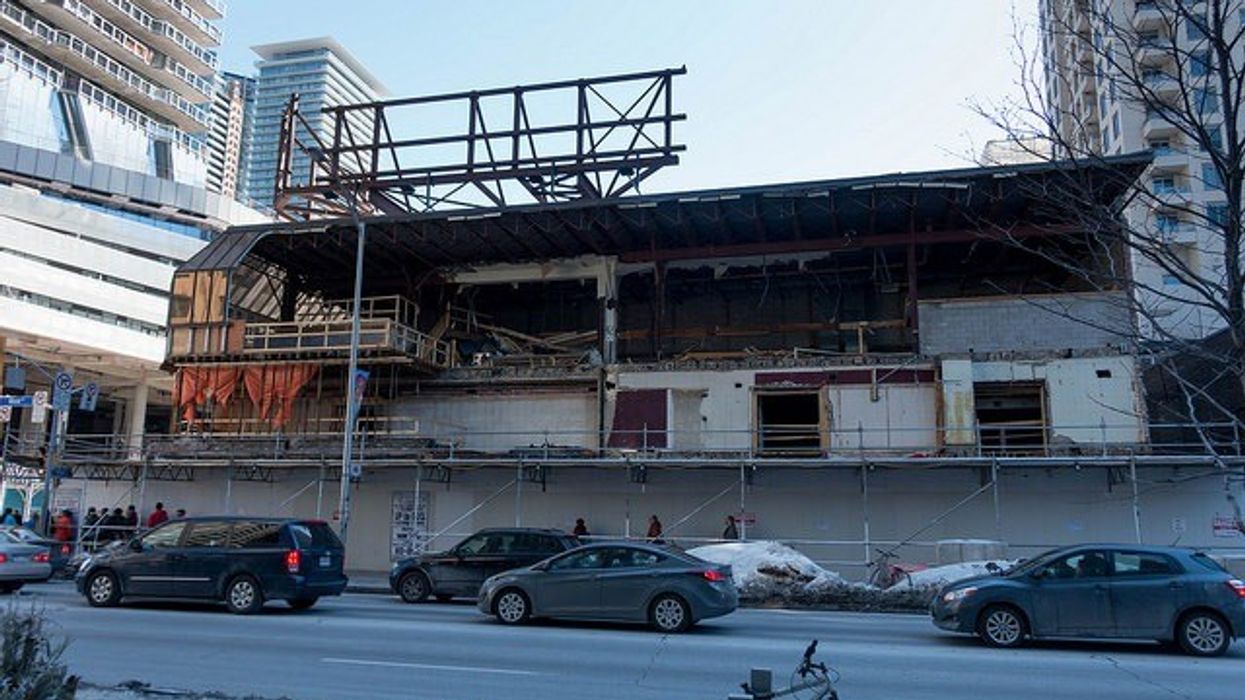
At a time when the typical response to heritage is to tear it down as quickly and quietly as possible — preferably early on a Saturday morning — there's new hope for the past.
A recent and unexpected rash of restored century buildings throughout the downtown core reminds us that there's still room for architectural history even in a city overwhelmed by growth.
Toronto has never had an easy relationship with its past. Beginning in the 1950s, municipal officials happily allowed the demolition of huge swaths of the city to make way for parking lots and corporate skyscrapers. Today, those parking lots have been filled with condos. And although we're putting up more towers than ever, now they are mostly residential.
We welcome them, of course, because they have enabled the transformational return to the city that began in the 1990s.
Beloved buildings
But in our rush to feed this growing appetite for urban life and accommodate the city's growing population, we are in danger of losing the qualities that made people want to live here in the first place. That includes the charm of the old brick buildings characteristic of the 1800s. Enlivened with ornamentation, these structures — Gothic, Italianate, neo-Classical, Romanesque Revival, Second Empire — remain as beloved as ever. When one disappears, the outrage is palpable.
A recent example occurred last January when a 110-year-old Bank of Montreal at Yonge and Roselawn was unexpectedly destroyed on a Saturday morning while local residents slept.

Thanks to weak provincial legislation, the demolition was entirely legal. That only added insult to injury. It reminded many of the unseemly demolition of the Stollerys at Bloor and Yonge in 2015. That, too, unfolded on a weekend, when workers showed up with crowbars to smash the building into rubble.
Both city and province were complicit in these acts of vandalism. The heritage designation process is confusing, haphazard and slow. The city's ineptitude is matched by the province's duplicity.
And even when a heritage building is designated, it usually ends up as little more than an out-of-place facade in one new condo tower or another. This puts the onus squarely on private developers to restore heritage sites.
There are no tax incentives available to them, no special programs or legislative assistance. Indeed, the system favours the unscrupulous, the bottom-liners, those who look at nothing beyond their own interests.
So when a heritage building rises from its own decrepitude, if not ashes, the city flashes a great collective smile. The reopening of the refurbished Broadview Hotel at Queen and Broadview this month was such an occasion.
Decaying heap
The much-loved Romanesque Revival structure, constructed in 1892, was a decaying heap on the verge of collapse when Streetcar Developments bought it in 2014 and set about remaking it as an event space as well as a 58-room boutique hotel with a rooftop bar and ground-floor restaurant.
Long known as a flophouse and home of Jilly's, one of a few of the city's remaining strip clubs, the handsome masonry structure was the very picture of urban seediness.
Yet even at its worst, its dirtiest, plastered in images of naked women and neon "Girls, Girls, Girls," the building's dignity remained intact. The original faade exists, having been restored by ERA Architects.
Though one might quibble about the unfortunate glass addition on top of the four-storey pile, once again the Broadview Hotel is the east end landmark Torontonians knew it would be.
Not far away at Queen and Parliament, the showroom that for decades housed Marty Millionaire furniture store has also been fully restored. Given that this was one of the most unpleasant corners in the city, the change is even more startling. The original structure, constructed in 1907, was expanded in the 1920s and then in the late 70s, when Marty Millionaire arrived, painted a noxious turquoise blue that made it impossible to ignore, for all the wrong reasons.
Chicago style
With three rows of large windows arranged horizontally, it is an elegant reworking of the Chicago style. Designed by architect Henry Simpson for the Home Furniture Carpet Company, it will soon become the Global Learning Centre of Free the Children, now called WE Charity.
Though one thinks of early 20th-century architecture as heavy on the outside and dark inside, this building is anything but. The renovation, which was done in collaboration with Kohn Partnership Architects, architect Philip Goldsmith and TriAxis Construction Limited, has returned it to the world of light. Now it is poised to do the same for the intersection.
Still on Queen Street, but much farther west at Dovercourt where the impressive Great Hall has stood since 1889, another corner has been returned to the land of the living.
Living history
Over the decades, the building has housed a YMCA, the Royal Templars of Temperance and the Polish National Union. It was also an art gallery as well as a hall famous as a showcase for indie bands. Now it is a multipurpose venue, available for everything from corporate events and weddings to classical music and rock concerts.

"It has a lot of personality and character," says Steve Metlitski, whose firm Triangle Developments undertook the $4-million restoration. "It's living history; people can feel it when they come." And as much as Metlitski loves the Great Hall, he didn't invest out of the goodness of his heart.
According to him, this was money well spent. Torontonians, he argues, have never been hungrier for architectural authenticity than in this age of steel and glass. So far, the bookings have proved him right.
Finally, there's the four-storey masonry office building at 642 King St. W. Built in 1894, it was bought by developer Allied Properties REIT in 2016 and is now being renovated and updated by Sweeny &Co Architects Inc.
Situated on the north side of King east of Bathurst, this simple but nicely proportioned brick box fits effortlessly into its setting. More civic-minded than almost anything built this century, it speaks of a culture that cares about architecture's responsibility to the larger context. This is one of those quietly harmonious buildings that plays a small but important part in the great symphony of the city.


















